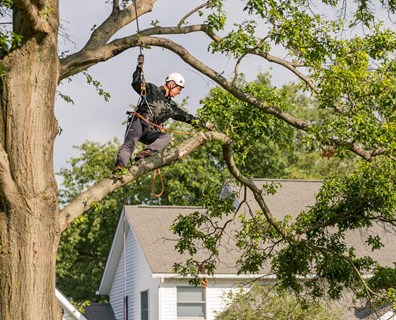What trees have Acorns? Acorns are the fruit of one of the most popular trees in the world the oak. Famous for its longevity and size.
Oak trees of long been a symbol of strength, honor, and wisdom. There are over 600 recognized varieties of Oak species in the world. All of which produce acorns.
Oak trees, Acorns, and some key characteristics.
Oak trees famously contain both female and male flowers on the same tree.
They come in both evergreen and deciduous breeds.
Evergreen oak trees are more popular than they are found in sunny locations.
Deciduous oak trees chandeliers every year and grow well in areas of shade are the partial sun.
A mature oak tree can produce over 1,000 lb of acorns in a single year.
We commonly divide oak trees into subclasses of red or white.
Red oak trees reduce acorns every 2 years. And their leaves can be differentiated by the bristles they have at their edges or tips.
White oak trees produce acorns every year different from Red oaks as their leaves lack any bristles.
The trees that can be classified within the oak family can vary in lifespan growing space with height.
What Trees Have Acorns? – Acorns Are The Fruit For The Oak Trees.
From the smallest known as the said Japanese evergreen Oak.
Which only grows to a height of 30 ft. The tallest White oaks that on average. Would mean reaching over 100 feet tall when mature.
The tallest recorded White Oak in the world was over 140 feet high. They also vary greatly in the width. Their foliage can spread, which can range from anything up to 160 ft.
Oak trees themselves depending on the variety will grow anything from 8 to 4 ft per year.
They also vary greatly in lifespans varieties such as the laurel. I think Oak lived for only 50 years. Whereas the oldest oak in the world is in South Carolina. Its current lifespan is over 1500 years old
Here are some of the most common acorn-producing Oak Trees.
#1 The California White Oak
This species of Oak is a California native. Famous for being extremely tolerant of arid and cloudy conditions. Once it becomes fully established it can survive for long periods of time without being irrigated.
In fact, its roots can quickly rot if they’re exposed to too much water. These trees flourish in the western United States. And is one of the tallest books known to grow in America.
These trees are famous for spreading canopy. And work well as ornamental are shade trees. Producing a thick canopy, they’re beautiful in any landscape.
#2 The Burl oak
Also known as the mossy cup Oak or just the Bur is another breed of an oak tree. That produces an abundance of acorns. When fully mature.
This is an impressively large tree. That is famous for producing enormous acorns and having uniquely shaped leaves. Native to the state of Illinois. It’s also found in many northeastern American states and Islam is considered America’s most majestic native Oak.
Wonderful immature you can comfortably reach a height of 80 ft. Although some of its most famous specimens are measured well over 100 ft tall.
Like many of its cousins, it’s famous for spreading and providing shade. Its leaves can grow to exceptional lengths of the 12 in and form the shape of a crown.
#3 The Swamp chestnut oak
Another member of the White Oak family, it’s famous for producing large amounts of acorns. True to its name.
It can thrive in areas of poor drainage and well-drained valley bottoms. We know that whitetail deer love the huge acorns produced by this oak tree.
And it forms a stable part of their diet during the autumn. When fully mature. These trees are stunning and can easily be recognized by their large leaves and scaly whitebarks.
If you looking to collect acorns from the swamp chestnut Oak. Mid-November is usually the best time.
#4 The Over-cup Oak
In contrast, the northern red oaks grow extremely slowly and only reach a height of about 80 ft. Identified by their deeply indented dark green foliage leaves that have rounded lobes.
The underside of the leaves is whitish gray and this will come off in your fingers when you rub. . It produces an oblong-shaped Acorn.
That is light brown and is famous for a cap that covers most of the nut. Most commonly found in poorly drained lowlands in the south and west of the United States.
#5 The Post Oak
Another Oak that is slow to mature. But given time it can grow to nearly 100 ft. It’s identifiable by its distinctive seven low leaves that have indentations on half of them.
It’s acorns I have cups that cover one 2/3 of the nut. And they’re round and shape distinctive wart-like markings.
These trees are primarily found in the deep South. But they also extend from New Jersey through to Texas.
Known to be resilient to drought. They are also decay-resistant and produce extremely resilient wood.
Another reason for your popularity is if they’re not prone to root rot. If you’re looking to identify a post Oak it’s most easily spotted. By looking for the sharp angles its branches grow out.
#6. The Scarlet Oak
The scarlet Oak thrives in sandy conditions. And it is also very drought-resilient one of the shorter oaks on the list only grew to a height of 50 ft.
And produces a glossy aircon that is medium to dark color. I’ve never lost that appearance like teeth, and for all intents and purposes.
They can be easily mistaken for one of his closest causes to pin oak. If you’re confused between the two.
The scarlet Oak produces a much larger acorn that has a deep cup compass at least 50% of the nut. Started old branches growing in a descending fashion.
Producing the regular rounded and open crown. That is distinctly different from the drooping or horizontal branches of the pin oak.
#7 The Gambel Oak
This breed of Oak has become popular with people who want to plant it in smaller backyards. These oaks are extremely short, and they’re often quite struggling in nature.
To keep us nice and tidy and really need to be regularly pruned. But if growing in the wild it can reach a height of up to 60 feet. They’re comedy printed in groups to provide hedging or screens.
They’re excellent windbreakers known to be very tolerant of saline soil. One of the most attractive features of the gamble Oak is its 7-in-long leaves. They are a dark green color but turn yellow, red, and orange in autumn.
The leaves themselves are packed with nitrogen and produce an abundance of nutrients that can compost the rest of your yard.
#8 The Black Oak
Need to Central and Eastern United States. It’s also known as the Eastern black Oak and is well suited to this rougher climate. Reaching a height of 80 ft for maturity.
This is one of the smaller varieties of white oak and unlike most of its cousins, it doesn’t spread horizontally. It actually forms in a large circular shape. Known for their stability they produce a distinctive back.
That has notice of the stripes running along the trunk please add to its already tall features. Stripes that run along the trunk of the tree draw your eyes upwards to its deeply shaded canopy. The canopy itself is extensive despite the shape of the tree featuring huge leaves.
#9 The Nuttall Oak
Another species of the oak tree has been adopted for wide-scale landscape use. Particularly because of its fast-growing nature. Growing on average to four feet annually.
It can produce some mature size trees in under a decade. They’re not allowed it’s also famous for producing an interesting branching structure.
It’s moderately drought resistant. it’s not known to have any issues with either disease or pests. And produces beautiful fall colors that can change from a deep red truth and bright yellow.
Reaching a maximum height of 60 ft to have an impressive spread of up to 50 ft. They can easily be transplanted meaning you can purchase a reasonably mature tree and never have to wait for it to grow.
#10 The Japanese Evergreen Oak
The first opener list that’s not native to the United States. It was first imported from Japan in 1878 and is commonly found in China and South Korea.
In Taiwan and its homeland, this oak tree grows well in warm temperatures. Because it grows at a lower rate and once fully mature only reaches a height of 30 to 40 ft.
It produces an impressively wide 20 ft dense spread despite its diminished size. So if you’re looking for a screening or shading tree for your backyard.
The Japanese evergreen Oak offers a perfect alternative. Acorns although can produce they commonly produce bitter-tasting tannins for making porridge and bread and also for thickening soups. Its wood is dense, hard burning, and is an extremely popular fuel.
#11 Northern Red Oak
Northern red oak may owe its name to reddish-brown wood, the red color of its fall leaves. Either way, this is one of the most popular oaks in the United States for a variety of different reasons.
Its popularity has increased in recent years because of its rapid growth rate and the fact that it can grow up to 20 ft in under 10 years. When fully mature, these oaks have a lifespan of up to 500 years and reach heights of over 100 ft.
They are an excellent long-term investment in any environment. Virtually anywhere, including in urban settings. This long-lived and rapidly growing tree produces an extensive canopy when fully mature.
And will continue to produce roots sprouts and Acorns throughout its lifetime.
#13 The Pin Oak
Similar in height to the northern red pin oaks produce an extensive canopy that can spread up to 40 ft. They grow uniquely upward fashion. With their center branches growing virtually horizontally to the ground.
Its lower branches are known to spread outwards and downwards creating an egg-like cone shape. Famous for producing a wonderful shade and fall foliage that can be red, copper, and orange.
Its name comes from a series of tough, short branchlets that grew all along with its limbs and branches. It’s sometimes referred to as the Spanish Oak and occasionally as a swamp Oak.
You can easily be mistaken for the northern hill Oak. But it produces a distinctly different acorn that is twice the length and width of the hill Oak.
We also find them in widely different habitats pin oaks prefer more moist soils found in lowland regions. As we mentioned previously, a pin oak will produce brown or red foliage during the fall.
This color will persist throughout the winter. He looks familiar and sheds their leaves in early Autumn.
#14 Sawtooth Oak:
The second imported Oak tree on the list is also native to China and Korea and Japan they can also find us in the Himalayas. First imported to the states in 1862, it derives its name from the sole-like edges of its leaves.
This is another impressive large Oak that grows to at least 60 ft in height. It’s extremely popular because of the difference between its leaves and that have a classical.
Oblong please for all intents and purposes appear like saw blades. Turning a dull yellow in the fall the tree itself will hold its leaves throughout the winter producing an excellent windbreak.
The acorns produced by the tree are safe to eat, but maybe an acquired taste because of their distinct bitterness.
# 15. The Water Oak:
Another distinct oak tree that produces unique foliage. Oak leaves are most commonly identified because of their pointy nature however the leaves of the Water Oak are rounded. As its name suggests, it drives in areas that are known for their ability to thrive in damp or wet conditions.
On the banks of streams and rivers, the Water Oak can grow to 80 ft in both width and high tide full of maturity. Because of this, it’s famous for producing an expensive canopy and shade.
Doing the fall, its leaves produce an impressive yellow color and it will impress you with its above average growth rate. Research shows it grows on average, and it’s a half every year. So this is not a tree that you’d want to plant close to your home it needs a lot of space to thrive.
#16 The Shumard Oak
The shimmered oak makes a list for a few reasons, mainly to find that it can shed its acorns anywhere from October all the way through to February. It’s referred to as a variable dropper, and this is a trait that’s not very common among oak trees. Because of its variable drop rate, when you encounter one of these trees it could provide an excellent opportunity to observe wildlife as most acorns have dropped much earlier in the season. It also produces excellent high-quality lumber that is very similar to Red Oak. Please have become extremely popular landscaping trees as they can thrive in a wide variety of soil types and are very easy to transplant.
As we mentioned previously, there are over 600 recognized species of Oak in the world so the 16 we’ve listed today are just the tip of the iceberg when it comes to the variety and abundance that this species of tree produces.
Some interesting facts about Acorns
Mature oak trees produce a nut that’s called an acorn. I still get older. Please, will produce a larger amount of acorns once they reach full maturity at 78 years of age one tree might produce thousands of these nuts every year. Acorns remain extremely popular for a variety of different reasons and continue to be used for decorative purposes throughout fall festivities. Here are some interesting facts about acorns.
Acorns come in many varieties
As you might guess, after 600 different species of oak trees they’re going to produce a wide variety of acorns that come in different colors, sizes, and shapes. Two oak trees convert you wildly different nuts for example White oaks produce acorns with water scale-like caps that are stubby and natural whereas Red oaks produce more egg-shaped acorns that come in a saucer-shaped cap.
Acorns are an excellent food source
Many animals rely on acorns as a staple of their diet, including deer woodpeckers, and squirrels. Well, some of these will pick acorns directly from the tree others like deer are forced to wait for them to fall to the ground. Historically, we humans have consumed Acorns, since we were hunters and gatherers. Acorns were one of the most popular nuts, because of their abundance, How we cook them hasn’t changed, roasting is still the easiest method. Most people are completely unaware of the fact that consuming too many acorns can be toxic as if you eat tannins in high concentrations they can be poisonous.
Your refrigerator is the perfect place to germinate an Acorn
This may be obvious to some, but acorns are a seed and they can be planted and used to grow your own oak trees. If you intend to do this, it’s vital to not let them become too dry otherwise they won’t germinate. One secret to ensuring your acorns remain fresh is to store them in a plastic bag in a cool dry place like your refrigerator. You should also keep them in a shady place but don’t allow them to freeze. Acorns need to remain dormant in low temperatures for over 1,000 hours in order for them to germinate. So your refrigerator provides the perfect place for them to germinate throughout winter.
Health Benefits of Acorns
I didn’t single House of acorns to your daily diet can provide you with 2% of your daily iron and calcium intake. They’re also an excellent source of potassium, phosphorus, magnesium, and folate. They’re an extremely healthy food not only are they sources of protein but they contain healthy cholesterol and are very low in sodium. Providing a naturally premium source of carbohydrates and calories you may not want to eat too many of these nuts but they offer the perfect treat or snack throughout fall.
Which Oaktree produces the tastiest Acorn?
Native to the Midwest, the chinquapin Oak thrives in alkaline or limestone areas. It produces a smaller coarser leaf than most of its Oak cousins. The tree itself routines an oval or pyramid style shape with a mark that is scaly ridged and pale gray color. The acorns produced by this Oak are believed to be the tastiest. They are best served roasted, check out the easy method listed below.
How to roast the perfect Acorn?
Acorns are easy to roast just follow this simple four-step process.
Set your oven to 350f.
Take a rimmed cookie sheet, leave it greased and add a single layer of acorns.
I love these to roast for a minimum of 60 minutes at this point they should turn a chocolate-like, brown color.
Once you’ve removed them from the oven, set them aside to cool and add some salt for some additional taste.
If you’re looking for the perfect oak tree to plant in your back garden.
There is a wide variety to choose from as you can see. You can look for the more aesthetically pleasing larger Oak level part of your home for hundreds of years to come. Or you can pick the more fast-growing variety that will quickly provide you with some shutter and shade.
The decision is purely up to you. Unfortunately, most oak trees need to reach full maturity before they’ll produce acorns so you may wait awhile for your first crop.


